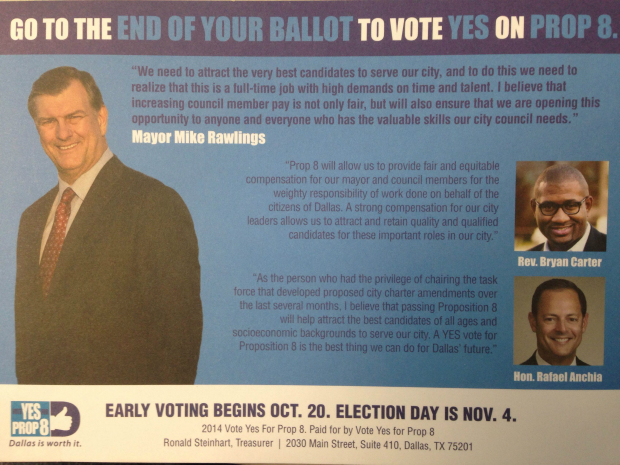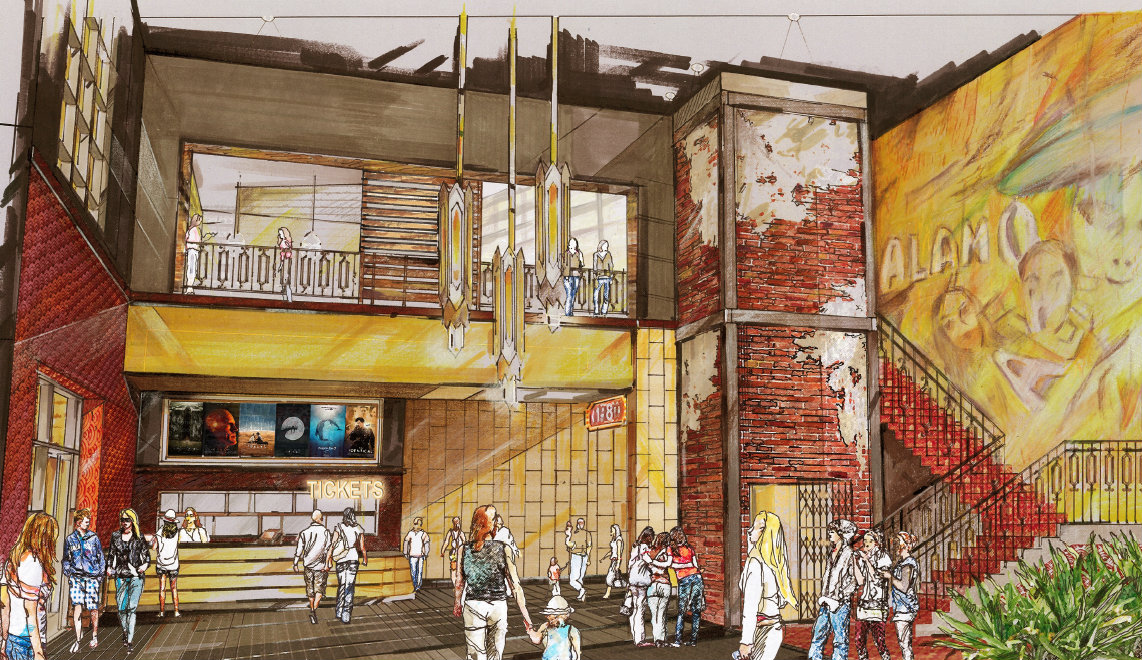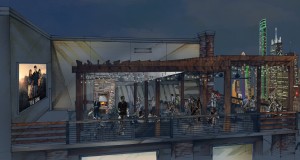
Party at ground zero, or: What it looked like the moment Fishbone played the first Lollapalooza on August 22, 1991 (Erich Schlegel/Staff photographer)
Back in August city officials warned that it’s going to take about $7 million to redo The Concert Venue Formerly Known as Starplex. And there’s just one problem: The city can’t afford it — no way, no how. There’s no spare scratch in the general fund, and it’s highly unlikely that Gexa Energy Pavilion’s going to get all new seats, bathrooms and everything-elses out of a bond program any time in the foreseeable future (or ever). But parks officials had a novel way to pay for it: Live Nation Concerts, which operates the city-owned facility that holds 20,000 concertgoers, will foot the bill and then keep $500,000 in rent money every year until it recoups its sizable investment in someone else’s shed. Based on a new agreement going to the Dallas City Council next month, Live Nation’s lease expires at the end of 2028.
The Park Board’s already signed off on the proposal; the question this morning was, would the city council? So far, so good: The Quality of Life & Environment Committee hear-hear’d the proposal at its Monday meeting, agreeing to send it off to the full council for consideration November 12.
If all goes according to plan, per the briefing, the redo would begin by no later than December 1, 2016, and wrap by at least March 31, 2018. It goes without saying that the city hasn’t put a penny into the place since it opened in 1988.
But there were a couple of Big Questions to be asked and answered first, beginning with: When Live Nation cuts a rent-and-shared-revenue check to the city every year, where does that money go? And if the concert promoter is going to keep half a million a year until the $7 million is paid off, how will the city cover the difference?
Right now, Live Nation’s supposed to ship the city a minimum of $350,000 annually, but it’s far more than that. According to the briefing documents provided by Park and Recreation Department Director Willis Winters, seen below, in FY 2011-2012, Live Nation cut Dallas City Hall a check for $701,262; the next year it was a whopping $965,897. City officials told curious council members that dough goes straight into the general fund, save for the small percentage that lands in the South Dallas/Fair Park Trust Fund per a decades-old agreement cut by then-Dallas City Council member Diane Ragsdale. (The new deal calls for Live Nation to kick in 20 cents out of every ticket sold; right now it’s 15 cents.)

When Thom Yorke and Radiohead played Fair Park in 2008, the shed was known as the Superpages.com Center. Catchy. (William DeShazer/Staff photographer)
A couple of council members were concerned about that disappearing revenue, among them Lee Kleinman and Sandy Greyson. Said the latter, the Gexa redo “sounds like a good deal [but] we’ll have to figure out how to replace that revenue.” At this morning’s meeting, there were no further suggestions.
Maybe that’s because Winters told the council it really has no choice but to allow the extreme makeover, as Gexa is the oldest shed among the 40 Live Nation operates across the country. And the longer it goes without a facelift, he said, the more likely it becomes that Dallas loses the shows that stop at Fair Park during the season.
“If you were to go out there during the day, you’d see the condition it’s in — and the urgent need for these improvements,” he said, noting that among other things, Live Nation needs to replace all 7,400-plus reserved seats … not to mention, well, everything else. “If we were to build this new today, it’d be hard to even give you a figure for it — but, likely, well over $50 million, if not more.” The $7 million, he said, is a bargain.
Winters also noted that this isn’t likely to be the last time the city revisits its deal with Live Nation. He noted the recommendations of the mayor’s Fair Park Task Force, which strongly pushes for a nonprofit to take over operations at Fair Park — including Gexa. Said Winters, “As part of this contract amendment all existing contracts, including that with Live Nation, will be reviewed by the city attorney’s office.” Should the task force’s recommendations “come to pass,” the deal with the concert promoter will be “assigned to a future governance board.” So keep an ear on that.
Council member Rick Callahan said he too was supportive of the makeover, at which point he pointed out another Fair Park venue in need of some TLC: the Band Shell, which he referred to as a “a wasted facility … that needs to be upgraded.” Could not have said it bett … oh, wait. Continue reading →












